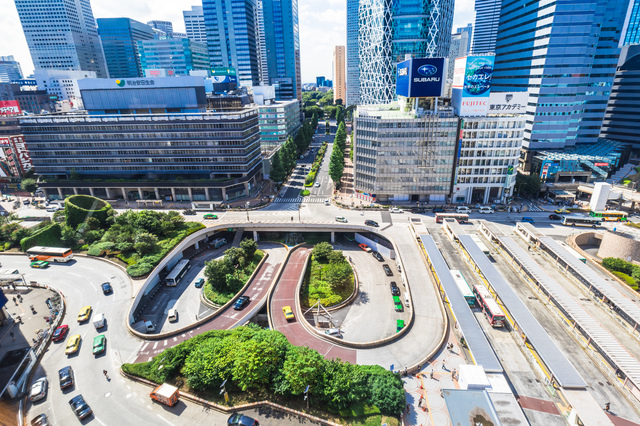“Tokyo Review special edition 002: History of TOD (2)” The forming process of business districts in Tokyo and TOD method
For the formation process of the business district in Tokyo, the development of railroads and the establishment of railway stations have contributed greatly. Mass transportation by railways are indispensable for the people commuting during a certain time range in the morning. If we were to handle these commuters only by cars, no matter how many parking lots and wide road network we prepared, it would not catch up with the demand and cause heavy congestion.
Now lets look at the so-called “CBD” (central business district) in Tokyo such as Marunouchi-Otemachi district which had been led by “Marunouchi Building” completed in 1923, and Nishi Shinjuku business district which began construction in the 1960’s. Both of the district had been planned based on the assumption that the workers will commute by foot from the terminal stations. Taking Shinjuku as an example, the underground road “Metropolitan road Sub Center No.4” heading westward from the underground traffic square of Shinjuku station west exit has sidewalks on both sides. This enables the pedestrians to move without crossing the roads and it is a very effective measure to manage the large pedestrian traffic in the morning and the evening.
The first phase of the Shinagawa Station East Project was completed in 1998, and the second phase was completed in 2004. During the project, a pedestrian network was established to connect to the concourse of Shinagawa Station via a pedestrian deck above the station’s traffic square. Through this network, you can access all 11 buildings in the district without moving up and down.
When Shiodome “Sio-Site” was completed in 2004, the O-edo subway line’s Shiodome station and LRT “Yurikamome” were established in the center of the district. In addition, the underground passage and the pedestrian deck connecting Shimbashi station were maintained, and each block in the district were connected by the pedestrian decks and the underground space.
As mentioned above, in the districts with reasonable pedestrian networks connected to the railway stations, development of complexes centered on with high-rise buildings are increasing. These can be recognized as the typical TODs.
I would introduce in detail about Shinagawa and Shiodome in the following issues.